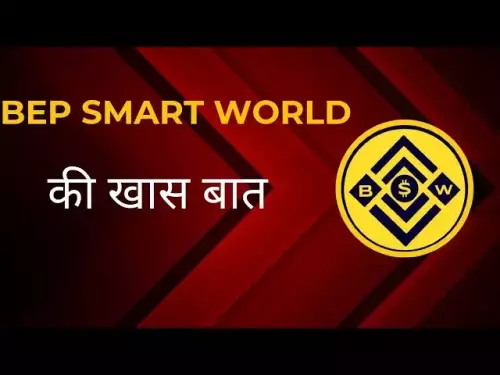-
 bitcoin
bitcoin $112195.049338 USD
2.42% -
 ethereum
ethereum $4124.915858 USD
2.81% -
 tether
tether $1.000570 USD
0.02% -
 xrp
xrp $2.861568 USD
2.25% -
 bnb
bnb $1000.346670 USD
3.04% -
 solana
solana $209.070819 USD
3.38% -
 usd-coin
usd-coin $0.999870 USD
0.02% -
 dogecoin
dogecoin $0.235379 USD
2.65% -
 tron
tron $0.335681 USD
-0.20% -
 cardano
cardano $0.803501 USD
3.38% -
 hyperliquid
hyperliquid $47.120881 USD
3.56% -
 chainlink
chainlink $21.501300 USD
3.44% -
 ethena-usde
ethena-usde $1.000571 USD
0.02% -
 avalanche
avalanche $29.793378 USD
3.62% -
 stellar
stellar $0.366964 USD
2.42%
What are zero-knowledge proofs (ZKPs)?
Zero-knowledge proofs enable secure, private verification of statements without revealing underlying data, revolutionizing privacy and scalability in blockchain and beyond.
Sep 20, 2025 at 01:55 pm
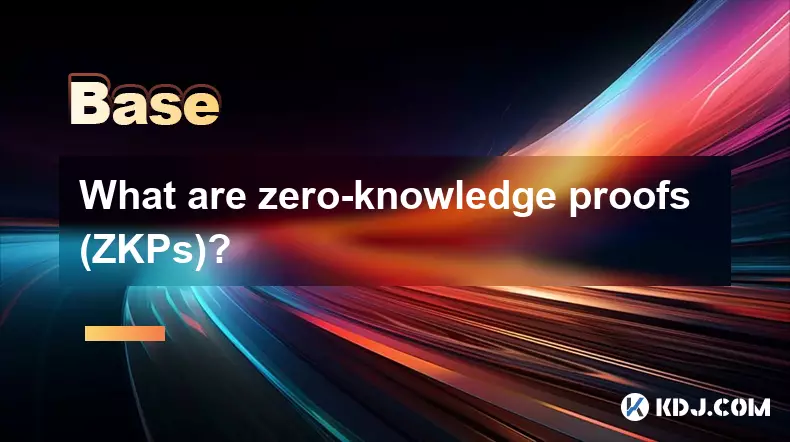
Understanding Zero-Knowledge Proofs in Cryptography
1. Zero-knowledge proofs (ZKPs) are cryptographic protocols that allow one party, known as the prover, to demonstrate to another party, the verifier, that a statement is true without revealing any additional information beyond the truth of the statement itself. This concept is especially powerful in environments where privacy and data minimization are critical.
2. The core idea behind ZKPs relies on three fundamental properties: completeness, soundness, and zero-knowledge. Completeness ensures that if the statement is true, an honest prover can convince an honest verifier. Soundness guarantees that no dishonest prover can falsely convince the verifier of a false statement. The zero-knowledge property ensures that the verifier learns nothing other than the fact that the statement is true.
3. In blockchain and cryptocurrency systems, ZKPs enable transactions to be validated without exposing transaction details such as sender, receiver, or amount. This allows for strong privacy guarantees while maintaining network integrity. For example, Zcash uses zk-SNARKs, a type of zero-knowledge proof, to shield transaction data on its public ledger.
4. The mathematical foundation of ZKPs often involves complex algebraic structures and elliptic curve pairings. These tools allow compact proofs that are both efficient to verify and secure under well-studied assumptions. As computational techniques advance, newer variants like zk-STARKs offer transparency by eliminating the need for trusted setup ceremonies.
Applications of ZKPs in the Blockchain Ecosystem
1. Privacy-preserving cryptocurrencies represent one of the earliest and most direct applications of zero-knowledge proofs. By embedding zk-SNARKs into transaction validation, blockchains like Zcash allow users to conduct fully encrypted transactions that are still verifiable by the network.
2. Scalability solutions such as zk-Rollups leverage zero-knowledge proofs to bundle thousands of off-chain transactions into a single proof submitted to the main chain. This drastically reduces congestion and gas fees on networks like Ethereum while preserving security through cryptographic verification.
3. Identity management systems benefit from ZKPs by enabling users to prove attributes—such as age or citizenship—without disclosing underlying personal data. This approach aligns with decentralized identity frameworks where individuals maintain control over their digital credentials.
4. Decentralized finance (DeFi) platforms are beginning to integrate ZKPs to allow private lending, borrowing, and trading. Users can prove solvency or collateralization without revealing account balances, enhancing confidentiality in financial interactions.
Challenges and Limitations of Current ZKP Implementations
1. Computational overhead remains a significant barrier. Generating zero-knowledge proofs requires substantial processing power, particularly for complex statements. This limits accessibility for low-resource devices and increases latency in time-sensitive applications.
2. Trusted setup procedures are required for certain types of proofs, such as zk-SNARKs. If the initial parameters are compromised during setup, the entire system's security could be undermined. Although zk-STARKs eliminate this requirement, they come with larger proof sizes and higher verification costs.
3. Development complexity hampers widespread adoption. Writing programs that generate valid ZKPs often requires specialized knowledge in both cryptography and circuit design. Tools like Circom and Halo2 are improving accessibility, but the learning curve remains steep.
4. Interoperability between different ZKP systems is limited. Each protocol may use distinct mathematical assumptions and formats, making it difficult to transfer proofs across platforms or combine them in multi-layered applications.
Frequently Asked Questions
What makes a zero-knowledge proof different from traditional encryption?Traditional encryption hides data by making it unreadable without a key, whereas a zero-knowledge proof allows verification of a claim about data without revealing the data at all. Encryption protects content in transit or storage; ZKPs protect information during validation processes.
Can zero-knowledge proofs be used outside of blockchain?Yes, ZKPs have applications in secure voting systems, authentication protocols, and confidential computing environments. They are useful wherever verification must occur without exposing sensitive inputs, including in enterprise cybersecurity and regulatory compliance scenarios.
Do zero-knowledge proofs eliminate the need for trust entirely?Not completely. While ZKPs reduce reliance on trusting third parties for data validation, trust may still exist in the form of software implementation, hardware security, or setup procedures—especially in systems requiring a trusted initialization phase.
Disclaimer:info@kdj.com
The information provided is not trading advice. kdj.com does not assume any responsibility for any investments made based on the information provided in this article. Cryptocurrencies are highly volatile and it is highly recommended that you invest with caution after thorough research!
If you believe that the content used on this website infringes your copyright, please contact us immediately (info@kdj.com) and we will delete it promptly.
- Bitcoin Wallets, Market Volatility, and Dormant Assets: What's the Deal?
- 2025-09-29 12:25:15
- Town Token, Crypto Payroll & Startups: A NYC Perspective on Adoption
- 2025-09-29 12:25:15
- DOT Parachains, XRP, and BullZilla: Decoding October 2025's Crypto Trends
- 2025-09-29 12:25:15
- Crypto Rollercoaster: Token Surges and Market Volatility in the Big Apple
- 2025-09-29 12:45:16
- Hyperdrive, Exploit, and Loss: Navigating the DeFi Minefield
- 2025-09-29 12:45:16
- MTP Swap, Buyback Plans & Market Makers: Decoding Crypto's Latest Moves
- 2025-09-29 12:25:15
Related knowledge

What are some common methods of cryptocurrency market manipulation?
Sep 27,2025 at 02:55am
Wash Trading and Its Impact on Market Perception1. Wash trading involves an individual or entity simultaneously buying and selling the same cryptocurr...

How do I read a cryptocurrency whitepaper?
Sep 27,2025 at 05:54am
Understanding the Structure of a Cryptocurrency Whitepaper1. Begin by identifying the executive summary, which outlines the project’s core vision and ...
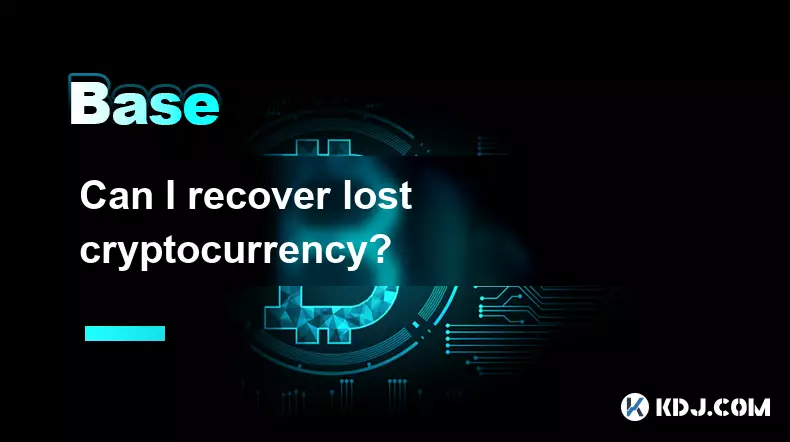
Can I recover lost cryptocurrency?
Sep 25,2025 at 08:18am
Understanding the Nature of Cryptocurrency Loss1. Cryptocurrency operates on decentralized networks, meaning there is no central authority to reverse ...

How do I choose a cryptocurrency investment strategy?
Sep 27,2025 at 03:55pm
Understanding Risk Tolerance in Crypto Investing1. Assessing personal risk tolerance is a foundational step when entering the cryptocurrency market. V...
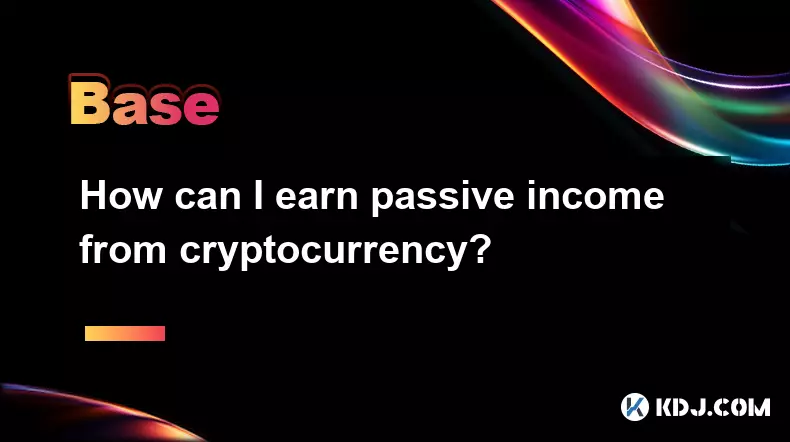
How can I earn passive income from cryptocurrency?
Sep 23,2025 at 10:18am
Staking Cryptocurrencies for Regular Returns1. Many blockchain networks operate on a proof-of-stake (PoS) consensus mechanism, allowing users to earn ...
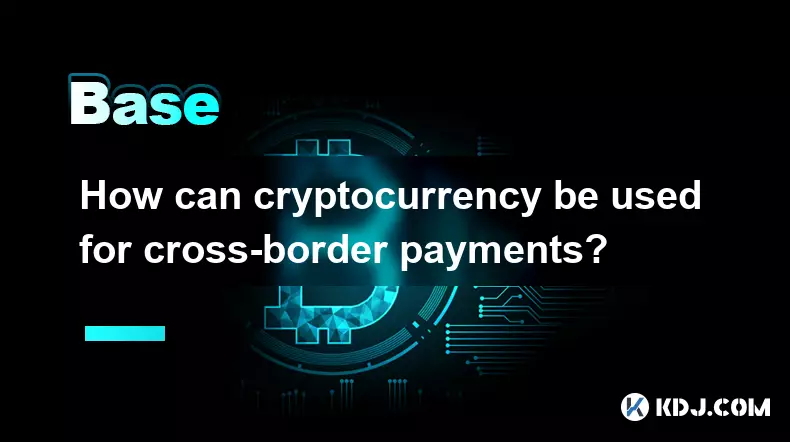
How can cryptocurrency be used for cross-border payments?
Sep 28,2025 at 01:36am
Efficiency in International Transactions1. Cryptocurrency enables near-instant settlement across borders without relying on traditional banking interm...

What are some common methods of cryptocurrency market manipulation?
Sep 27,2025 at 02:55am
Wash Trading and Its Impact on Market Perception1. Wash trading involves an individual or entity simultaneously buying and selling the same cryptocurr...

How do I read a cryptocurrency whitepaper?
Sep 27,2025 at 05:54am
Understanding the Structure of a Cryptocurrency Whitepaper1. Begin by identifying the executive summary, which outlines the project’s core vision and ...

Can I recover lost cryptocurrency?
Sep 25,2025 at 08:18am
Understanding the Nature of Cryptocurrency Loss1. Cryptocurrency operates on decentralized networks, meaning there is no central authority to reverse ...

How do I choose a cryptocurrency investment strategy?
Sep 27,2025 at 03:55pm
Understanding Risk Tolerance in Crypto Investing1. Assessing personal risk tolerance is a foundational step when entering the cryptocurrency market. V...

How can I earn passive income from cryptocurrency?
Sep 23,2025 at 10:18am
Staking Cryptocurrencies for Regular Returns1. Many blockchain networks operate on a proof-of-stake (PoS) consensus mechanism, allowing users to earn ...

How can cryptocurrency be used for cross-border payments?
Sep 28,2025 at 01:36am
Efficiency in International Transactions1. Cryptocurrency enables near-instant settlement across borders without relying on traditional banking interm...
See all articles
























